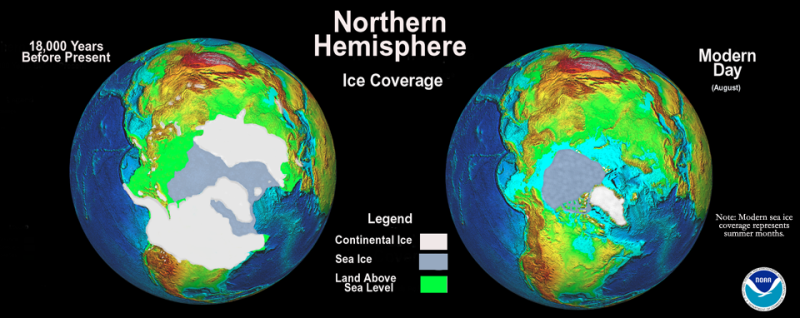What has happened to global temperature over the past 10,000 years?
There’s an odd mismatch between land-, sea-, and climate model-based estimates (1). This is referred to as the “Holocene Conundrum”, the Holocene being the current geological epoch, which began roughly 11,600 years ago. The discrepancy between these data has led to many skeptics doubting the role of greenhouse gases in climate change during the Holocene and in the planet’s future. Accordingly, this conundrum represents one of the most important unsolved mysteries in climate science.
What’s the Conundrum?
Most scientists agree that global near-surface temperatures have gradually cooled over the past 2000 years (2,3). What happened during the Holocene prior to the common era (specifically, 10,000 – 2000 ya) remains a subject of more controversy. Dr. Julian Sachs, professor at the University of Washington, explains:
In 2013, Marcott, et al. published results from marine temperature proxies (check out my recent post on alkenones) that suggested long-term cooling from 10,000 to 5,000 ya in the North Atlantic (4). In contrast, data from fossil pollen in North American and Europe published in 2018 by Marsicek, et al. indicates long-term warming during this same period (5). This warming trend is in agreement with what would be expected as a result of retreating ice sheets and increasing atmospheric concentrations of greenhouse gases (2).
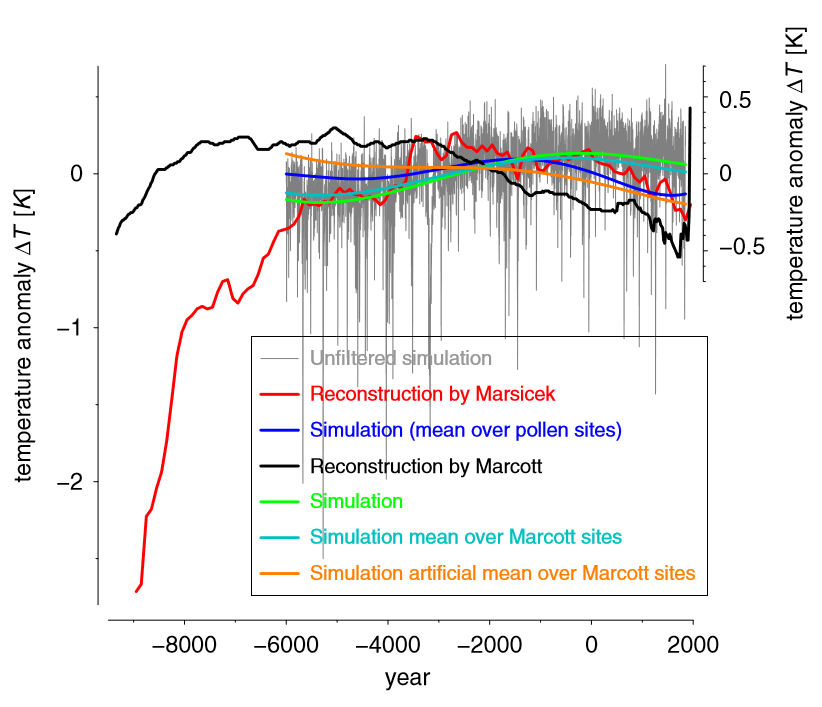
Why the Discrepancy?
What’s the reason for this confusing data mismatch? Dr. Sachs lists some possibilities:
Some have suggested that alkenone sea surface data could be seasonally biased and accordingly not necessarily reflect the global mean (2). As alkenones are produced by haptophyte algae, more are produced during warmer seasons when these algae are more abundant. In addition, alkenones can be transported from elsewhere by ocean currents, meaning that data recovered from a specific location might not all be from algae living in that region (1,2).
Solving the Mystery
The goal of the current mission aboard the R/V Atlantis is to resolve this discrepancy. Dr. Sachs elaborates on the importance of this work:
Multiple strategies will be employed:
- Measurement of alkenone hydrogen isotope ratios. To assess how much of the alkenone deposit has been transported from different regions, alkenone hydrogen isotope ratios will be measured. Notably, the ratio of hydrogen-2 (deuterium) to hydrogen-1 (protium) as present in alkenones differs based on the temperature of the environment in which the producing haptophyte algae lived. This is because these species obtain the hydrogen atoms used for alkenone bio-manufacturing from the seawater. Here are the important points:
- Isotopically light water (containing more protium) evaporates more easily than isotopically heavy water (containing more deuterium).
- Warmer climates allow for increased evaporation of isotopically heavy water, due to increased water temperature.
- As moisture-rich air moves from lower to higher latitudes, isotopically heavy water drops out preferentially as precipitation. Accordingly, air reaching higher latitudes has been depleted of isotopically heavy water, and precipitation at higher latitudes consists primarily of isotopically light water.
- Over time, the result is that surface water in higher latitudes (colder) has a smaller deuterium to protium ratio, whereas water at lower latitudes (warmer) has a larger deuterium to protium ratio.
- Given the above, haptophyte algae living in higher latitude regions produce alkenones that have a lower ratio of deuterium to protium. In contrast, this ratio is higher in alkenones produced by species living in warmer climates.
- If no alkenones in a given core layer have been transported from a different region, hydrogen isotope data should indicate that they were all produced in a similar temperature environment.
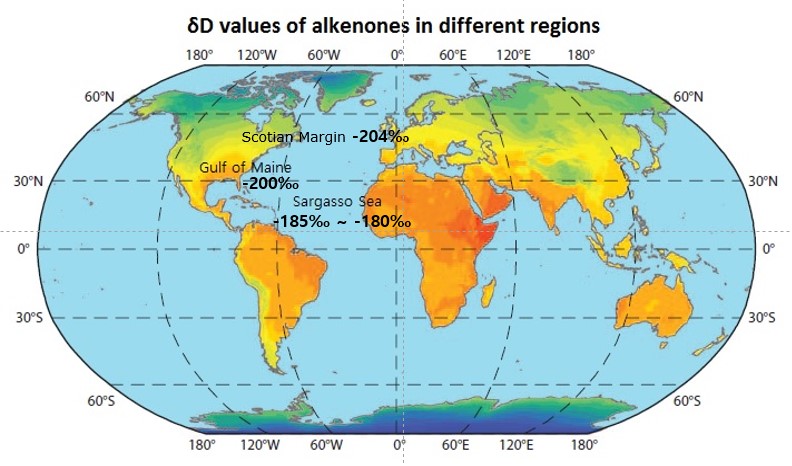
- Radiocarbon dating of alkenones. As a complement to the above, collected alkenones will be radiocarbon dated. If no alkenones in a given core layer have been transported from a different region, these alkenones should all date to around the same age.
- Comparison of alkenone data to Mg/Ca data from foraminifera. Data concerning the ratio of magnesium to calcium as present in foraminifera will be used to complement the alkenone data. The Mg/Ca ratio in forams notably changes based on sea temperature. While it is a less reliable measure of sea surface temperature – the forams being evaluated can live at different depths in the water column – this proxy controls against transportation from different regions. Forams are heavier and typically end up deposited near the environment in which they lived, as opposed to alkenones, which are more susceptible to transportation.
We are planning to core at 6 sites along transects east of Nova Scotia and New Jersey. At each site, data will be collected allowing for 2 climate reconstructions, one via alkenones and one via foram Mg/Ca ratio. This will yield 12 total new climate reconstructions for this time period.

Did You Know?
How do these scientists find areas with good mud for sampling? The desire is to take cores in soft mud and avoid hard rock and sand. Two different types of sonar are used here. Multi-beam sonar scanning (higher frequencies) provides a surface map of the ocean floor, the multiple beams allowing for a transect scan. A lower frequency sonar (3.5 kHz) is used to penetrate the seafloor, allowing scientists to analyze seafloor consistency and sub-bottom profile. Cassie Stirpe, a graduate student from the University of Maine, explains:
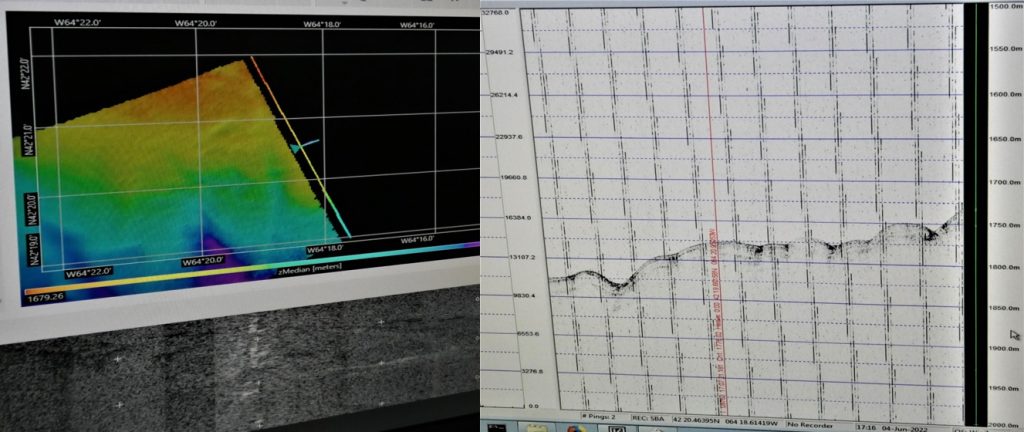
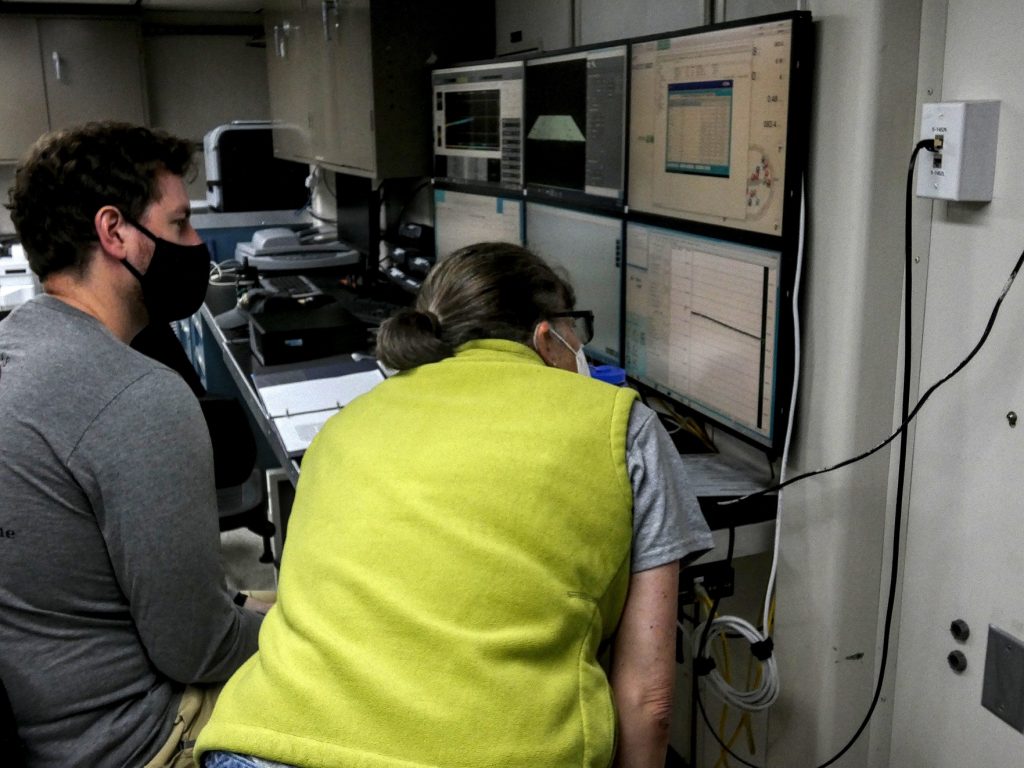
Wildlife Sightings
- Herring Gull
- Great Shearwater
- Sooty Shearwater
- Common Dolphin
- Fin Whale

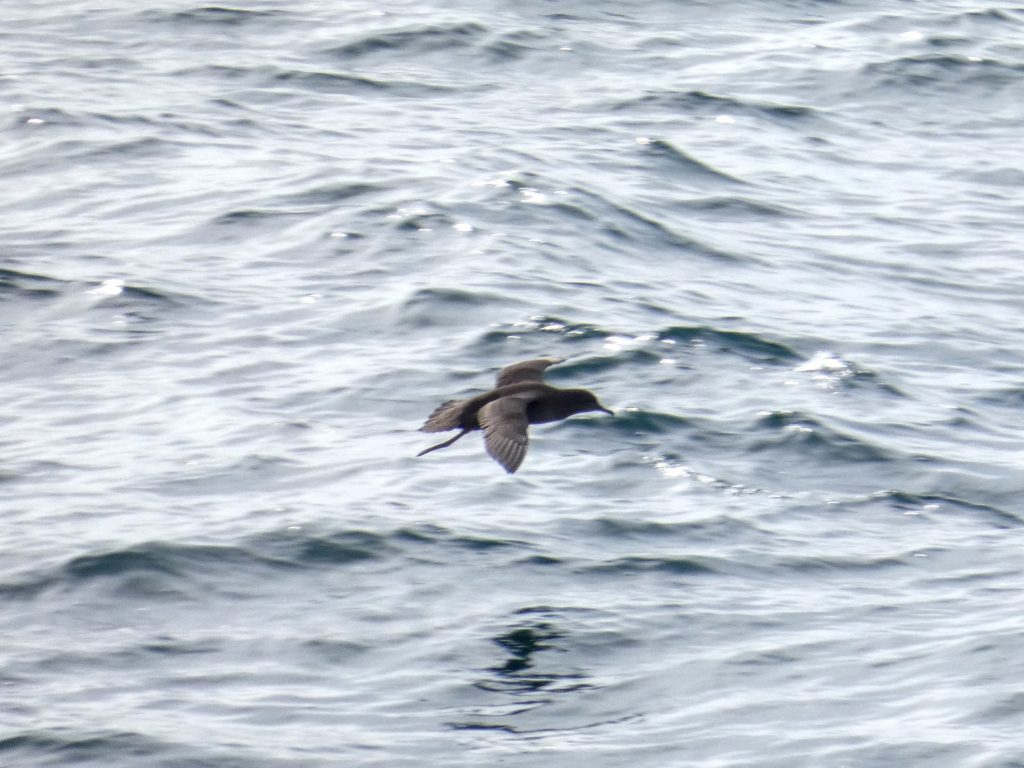
Sources
- NSF Award # 2018134 – “Collaborative Research: Provenance of Alkenones & Holocene Temperature Evolution of the NW Atlantic.” www.nsf.gov
- Bader, Jürgen, et al. “Global Temperature Modes Shed Light on the Holocene Temperature Conundrum.” Nature Communications, vol. 11, no. 1, 18 Sept. 2020, 10.1038/s41467-020-18478-6.
- Mann, Michael E., et al. “Global Signatures and Dynamical Origins of the Little Ice Age and Medieval Climate Anomaly.” Science, vol. 326, no. 5957, 26 Nov. 2009, pp. 1256–1260, 10.1126/science.1177303.
- Marcott, S. A., et al. “A Reconstruction of Regional and Global Temperature for the Past 11,300 Years.” Science, vol. 339, no. 6124, 7 Mar. 2013, pp. 1198–1201, science.sciencemag.org/content/339/6124/1198.full, 10.1126/science.1228026.
- Marsicek, Jeremiah, et al. “Reconciling Divergent Trends and Millennial Variations in Holocene Temperatures.” Nature, vol. 554, no. 7690, Feb. 2018, pp. 92–96, 10.1038/nature25464. Accessed 5 June 2022.
-
Englebrecht, Amy C., and Julian P. Sachs. “Determination of Sediment Provenance at Drift Sites Using Hydrogen Isotopes and Unsaturation Ratios in Alkenones.” Geochimica et Cosmochimica Acta, vol. 69, no. 17, Sept. 2005, pp. 4253–4265, 10.1016/j.gca.2005.04.011.
